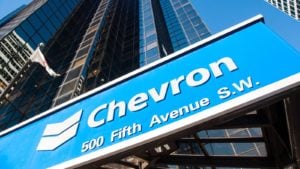When it comes to income investing, we prefer dividend stocks that have demonstrated long histories of being able to raise their dividends throughout all kinds of economic conditions. There are many ways to find stocks with great dividend longevity, but one of the easier ways is to simply start with the Dividend Aristocrats.
This is a group of just 65 stocks that are S&P 500 components, and have raised their dividends for at least 25 consecutive years.
That level of dividend longevity means all 65 of these companies have been able to raise their payouts through recessions, meaning the odds of them continuing to do so in future recessions is much higher.
Not all Dividend Aristocrats are created equal, as some are more geared towards earnings growth, dividend growth, or current yield. In this article, we’ll focus on the latter and highlight three Dividend Aristocrats that are currently yielding more than 4%. They are:
Dividend Aristocrats: Leggett & Platt (LEG)

Our first Dividend Aristocrat is Leggett & Platt, a company that designs, manufactures and sells engineered components and other products globally. The company operates a bedding business, a furniture and textile business and a miscellaneous segment. Through these segments, Leggett makes things like steel rods, chemicals and additives, foams, mattresses, springs, components for automotive seating, and much more.
The company was founded in 1883, generates about $5 billion in annual sales, employs just over 20,000 people, and trades with a market capitalization of $5.5 billion. Leggett has raised its dividend for the past 48 consecutive years, and it yields 4.1%.
Leggett’s earnings growth has been impressive at times, particularly coming out of the financial crisis. Indeed, between 2009 and 2019, the company boasted a 14% average annual earnings-per-share growth rate. That was based in part on a low base from the recession, and final earnings for 2021 – which haven’t yet been reported – are expected to be roughly equal to 2016.
We’re estimating 5% annual earnings-per-share growth looking forward, which we believe could accrue from a combination of organic sales growth, acquired sales growth and a modest level of share repurchases. Leggett is somewhat vulnerable to recessions, however, so our long-run estimate could have upside or downside depending upon when the next recession strikes.
The company’s competitive advantage is in its extremely long operating history, which has seen it grow its product catalog to a very wide and deep assortment of niche components, where competition is light. It also sports a highly diversified customer book so it isn’t beholden to one industry for revenue and earnings. Given this, we see the company’s ability to continue to grow its dividend in the years to come as quite good.
AbbVie (ABBV)

Our next stock is AbbVie, a diversified pharmaceutical company. AbbVie’s biggest revenue generator is Humira, the world’s best selling drug and one that AbbVie sells for several ailments. The company also offers a high number of various cancer treatments, thyroid treatments, anemia and much more.
AbbVie was formed in 2012 but prior to that, was part of Abbott Laboratories (NYSE:ABT). AbbVie now employs 50,000, generates $56 billion in annual revenue, and trades with a market capitalization of $240 billion. Including its time as part of Abbott, AbbVie has raised its dividend for 50 consecutive years, making it a Dividend King. In addition, its current yield is 4.1%.
We expect modest 3% annual earnings-per-share growth from AbbVie in the coming years, as the company is facing a revenue cliff for its best seller, Humira. That drug is rapidly approaching patent expiration in a variety of developed markets, including the U.S. AbbVie has a replacement for Humira, and it has acquired and built several other products to help offset this revenue cliff, but it is a concern nonetheless for near-term growth.
Even so, we see AbbVie’s ability to grow revenue organically, as well as buying back its own stock, as driving sustainable earnings-per-share growth over time.
AbbVie’s competitive advantages include its massive scale, and its world class pipeline of drugs. AbbVie’s focus on cancer treatments has positioned it quite well in a variety of small markets where it holds huge market share. And should Humira’s replacement prove to be successful, we believe it could see accelerated revenue growth into the middle of this decade.
Given that AbbVie sells non-discretionary treatments for serious ailments, it is quite recession resistant. And given the payout ratio is less than 50% of earnings, we believe it will generate dividend growth for many years to come.
Dividend Aristocrats: Chevron (CVX)

Our final stock is Chevron, an integrated oil, gas, and chemical producer based in the U.S., but operating globally. Chevron operates upstream and downstream businesses, meaning it explores, develops, and produces crude and natural gas, in addition to refining crude into marketable end products.
Chevron was once part of Standard Oil, tracing its roots to 1879. Today, it employs 48,000 people, generates $160 billion in revenue, and trades with a market capitalization of $249 billion. Chevron has raised its dividend for 34 consecutive years, and has a current yield of 4.1%.
We see no growth in the coming years for Chevron, as it is seeing roughly flat total output. With rapidly fluctuating oil and gas prices, Chevron’s margins move around quite a bit as well, but on the plus side, Chevron only needs oil to be $40 per barrel for it to fund its dividend. Oil is at twice that level today, so there could be some upside to our forecast if that level of oil pricing is sustained.
Chevron’s major competitive advantages include its scale, which is one of the largest in the world. In addition, Chevron has a chemicals business that helps it diversify away from strictly oil and gas demand. It also helps smooth out price changes in the raw commodities themselves.
Still, at the end of the day, Chevron is a commodities business and is therefore beholden to the pricing of those commodities to an extent. With the dividend at ~60% of earnings, we believe it to be safe in all but the most bearish scenarios.
Final Thoughts
When looking for great dividend stocks, one of the best places to start is with the Dividend Aristocrats. These companies have stood the test of time and economic weakness, and in the case of Leggett & Platt, AbbVie and Chevron, they all have current yields that are more than triple that of the S&P 500.
Given this, we see all three as quite attractive for income investors today.
On the date of publication, Bob Ciura is long ABBV. The opinions expressed in this article are those of the writer, subject to the InvestorPlace.com Publishing Guidelines.
Bob Ciura has worked at Sure Dividend since 2016. He oversees all content for Sure Dividend and its partner sites. Prior to joining Sure Dividend, Bob was an independent equity analyst. His articles have been published on major financial websites such as The Motley Fool, Seeking Alpha, Business Insider and more. Bob received a bachelor’s degree in Finance from DePaul University and an MBA with a concentration in investments from the University of Notre Dame.
